April 2016 - Published in Hotel Business Review - by Mark Heymann - Fourteen U.S. states started 2016 with a higher minimum wage, and it seems all but certain that the federal minimum wage, which has remained at $7.25 since 2009, will soon follow. The White House has thrown its support behind the Raise the Wage Act, which would increase the federal minimum wage to $12 by 2020 - a move that also has the support of 60 percent of small businesses, according to a poll conducted for Small Business Majority by Public Policy Polling.
Meanwhile, a Hart Research poll shows that 63 percent of the public favor an even larger federal increase - to $15 - over the same time frame. This higher figure has been embraced by New York's governor, who has signed a bill implementing a 70-percent raise in his state's fast food minimum wage to $15 by 2018, and by several cities that have committed to phase in a $15 minimum wage, including Los Angeles; Portland, Ore.; San Francisco; and Seattle.
Bottom-Line Impact
The benefits of a higher minimum wage are clear for those workers who will bring home a bigger paycheck, but what will it mean for service industry employers and their customers? While historically raising the minimum wage has had little impact on profitability, those increases were typically incremental. In 1978 for example, the federal minimum wage grew from $2.65 to $2.90 - a 25-cent increase. Today's proposed changes are in the ballpark of four or five dollars an hour, which will have a more dramatic effect on organizations. And those that fail to review their business model and adjust their operating philosophy to offset the higher labor costs could potentially experience a dollar-for-dollar negative impact on their bottom line.
The Ripple Effect
Minimum-wage workers may be only a limited percentage of a hotel's staff (this will vary by area of the country and by state), but raising their pay will likely create a ripple effect in the market. Consider that there also will be employees who are paid above the current minimum wage but below the increased minimum wage. If the hotel only raises those workers' wages to the new minimum, it puts them at the same wage level as workers who had been earning less. This could well lead to a discouraged group of employees or a less engaged team, and that could have a broader impact on the bottom line. The alternative would be to increase those employees' wages at the same differential as their minimum-wage-earning colleagues.
Whether that differential is a percentage or an absolute dollar-for-dollar increase could make a significant difference in labor costs. For example, one employee is paid $7.25 per hour and another earns $10 per hour, or 38 percent above minimum wage. If the minimum wage is raised to $10.50 per hour, does the employee who had been paid $10 per hour get the same dollar increase as the minimum-wage employee, for a new wage of $13.25 per hour? Or does the higher-paid employee continue to earn 38 percent above minimum wage, bringing his or her wage to $13.80? That's a larger gap than a pure dollar-for-dollar increase. Now consider the impact in a city like Los Angeles, where the differential will be even greater as the city phases in a $5, or 50-percent, increase that will take the minimum wage from $10 in 2016 to $15 by 2020.
Offsetting Higher Labor Costs
So how can hoteliers and other service operators make up the difference? Mitigating the effects of a higher wage will require a heightened focus on the bottom line. Operators will therefore need to keep costs in line not only with financial goals but also with service delivery goals. They'll need to look at how they structure staffing levels and how flexible their team is. And, they'll need to find the point at which intent to recommend and return remains high while creating a least-cost structure for service delivery.
Pass the Increase to Customers
A simple solution is just to increase prices; in some cases the market may well absorb some of the higher labor cost. Hotel room rates might be the simplest to address in that manner. For example, if the ADR is $200 and the wage rate for housekeeping staff increases from $10 to $15 per hour, assuming all positions in the housekeeping department use one hour per room, the hotel could easily absorb the wage difference into the ADR by pushing it to $205 -- a 2.5% increase. This might not even be noticeable because of the high starting point of the revenue per unit.
Although likely not as easily, a similar approach could be taken with a hotel's food and beverage operation. If a restaurant's cost of labor goes up by $250 per day, the business could calculate average covers and increase menu prices by an amount that offsets the higher labor cost, just as in the room sales operation. How much of an increase customers would be willing to absorb will depend on the price elasticity of the organization, but in a 2014 Reason-Rupe poll, a slight majority - 51 percent - of respondents indicated they would support a higher minimum wage even if that increase caused businesses to raise prices. Obviously, the market will dictate what can be done from a pricing standpoint.
Improve Productivity
Organizations that offset the wage increase by identifying opportunities to improve productivity will ensure that their value proposition remains strong, giving them a competitive advantage. Hoteliers will need to rethink how their business is run and strive to better match staff availability to customer demand. This may mean reducing staff, but not necessarily. Rather it will also be a matter of better allocating hours for the workers they have. In making its case that job loss is not an inevitability with a minimum wage hike, the U.S. Department of Labor cited San Francisco as a market that last year experienced positive job growth in the leisure and entertainment industry (which includes full-service restaurants) despite a recent increase in minimum wage. Increases in business can help distribute the impact of higher wages over a larger number of customers, particularly in fast-transaction operations, such as quick-service restaurants.
Organizations can also address the minimum wage increase by assessing under-utilized hours and redeploying them for better bottom-line results. They might also consider employing more part-time workers who only cover business peaks and are willing, or even prefer, to work shorter shifts.
Staff Flexibility
One approach to boosting productivity is flexible staffing, which could include having certain employees work across departments. Consider the front desk at a hotel, where from 11 a.m. to 3 p.m. there may be little activity. That presents an opportunity to move a front desk employee to the restaurant for those hours to serve as host. The service industry has been challenged by minimum shift requirements that negatively impact labor costs. While its clearly reasonable for employees to expect to be utilized for a certain number of hours when they come to work, departmentalization coupled with minimum shift requirements has reduced productivity as well as job enrichment. Cross-departmental staffing, possibly coupled with a pay-for-skill program, can reduce the impact of minimum wage increases while also having a positive impact on staff attitudes.
Reduce Shift Hours
Historically, reducing shift hours has been perceived as a penalty rather than a positive strategy to offset the overall costs of doing business. Yet staffing shorter shifts at a slight premium can be a creative approach to applying labor from a pure dollar component. Washington, D.C. is one market that currently pays such a premium, in this case time and a quarter, for an employee working fewer than 20 hours.
Taking this approach to a natural extension, organizations could strive to better match hours worked to the actual work content required. For example, assume an operation needs to cover a two-hour peak. Instead of a minimum four-hour shift at a $15-per-hour wage rate (or $60 for the work to be done), management could seek out staff to work a three-hour shift for $16.50 per hour ($49.50), or a two-hour shift for $18 per hour ($36). This would save the business either $10.50 or $24 for the same work content that formerly cost $60. From the worker's perspective, the same four hours that used to produce a $50 payday could now be worth $72, or a 20-percent premium.
Admittedly, there are challenges to this scenario. It assumes the individual could find another two-hour shift at the higher rate. It also would require changes in union agreements. And, it would take greater coordination and understanding of real work needs on the organization's part (technology no doubt can help on that front). Assuming these challenges are surmountable, moving to shorter shifts could lead to the market rethinking its absolute dollar cost of service versus the hourly wage rate. At the same time, it would create greater flexibility in the workforce as well as higher wages for staff who embrace that flexibility.
Food for Thought
Beyond higher labor costs, increasing the minimum wage will have ramifications on everything from employee engagement to healthcare costs. Here are a few areas to consider:
- Effect on engagement. From an attitudinal standpoint, how an organization handles the minimum-wage increase will also have an impact. Those businesses that don't provide a proportional raise will experience wage compression and most likely a disgruntled workforce. How will this affect employee engagement and turnover rates? Will those businesses that do raise wages proportionally create a higher satisfaction level among staff? What will be the impact on how their workers approach tasks and the level of service they provide customers? Keep in mind that wage changes impact attitudes only for a short period of time. Engagement is driven more by managerial practice that hourly wages.
- Effect on spending habits. Higher wages mean more disposable income. Will higher paid minimum-wage workers be inclined to dine out or travel more often, creating new service industry customers? What about those who were making $14 an hour and are now making $20? This creates a real potential for positive growth.
- Crossing borders for higher pay. Will workers be willing to travel farther to take advantage of a higher minimum wage in a bordering state or city? If California is paying $10 per hour while Nevada pays $8.25, how many Nevada residents living near the border will cross the state line for a 20-percent higher wage? What if the wage difference is 30 to 50 percent? Businesses in the lower-paying market also need to consider the potential negative impact on staff turnover and training costs.
- Quality of work. Does an employee work harder, and better, for $15 per hour versus $10? Perhaps in the short term, but not over a longer period. That said, an improved quality of life for employees who, thanks to a higher wage, no longer have to carry two jobs to make ends meet could lead to better on-the-job performance. This could theoretically also impact total market employment, which can increase market spend on the service industry.
- Mitigating healthcare costs. With the advent of changes to healthcare regulations under the Affordable Care Act, a minimum wage increase will offer a positive side effect for organizations that provide healthcare to their workers. Since the employee contribution is a percentage of income - which for 2016 is capped by the IRS at 9.66 percent - a higher wage means a higher employee contribution, offsetting some of the employer's healthcare costs. For instance, full-time employees at $10 per hour whose income is raised to $15 per hour will then contribute $1,000 per year more to their employer-funded health care plans.
At the end of the day, the industry will probably address the minimum-wage hike with a mix of several approaches. Hotels will look to improve productivity with more covers per hour or more revenue per hour while at the same time potentially increasing prices. And those that do a better job of truly understanding customer demand for service, match their labor to that demand, and increase employee flexibility, will likely create a greater offset financially to the impact of higher labor wage rates.
About UniFocus
UniFocus workforce management software provides all the tools you need to make labor force decisions with confidence. We help you optimize your daily operations with powerful yet flexible tools. Empower leadership and staff to create schedules that maximize customer satisfaction while minimizing wasted labor hours. Better labor management for contingent workforces in the hospitality, restaurants, retail, and healthcare industries. If you're in the market for a better WFMS, contact us today.








